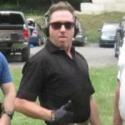Had a similar experience yesterday. I was working hard at accuracy, and really trying to compare the trigger feel between two Glocks- minus connector vs minus/NY1. I was hard focused on the front sight and "feeling" the trigger press all the way through. For the first time in a long time I was totally surprised when a shot broke. Need to remember to do that more often.
Sent from my PC36100 using Tapatalk 2



 Reply With Quote
Reply With Quote






